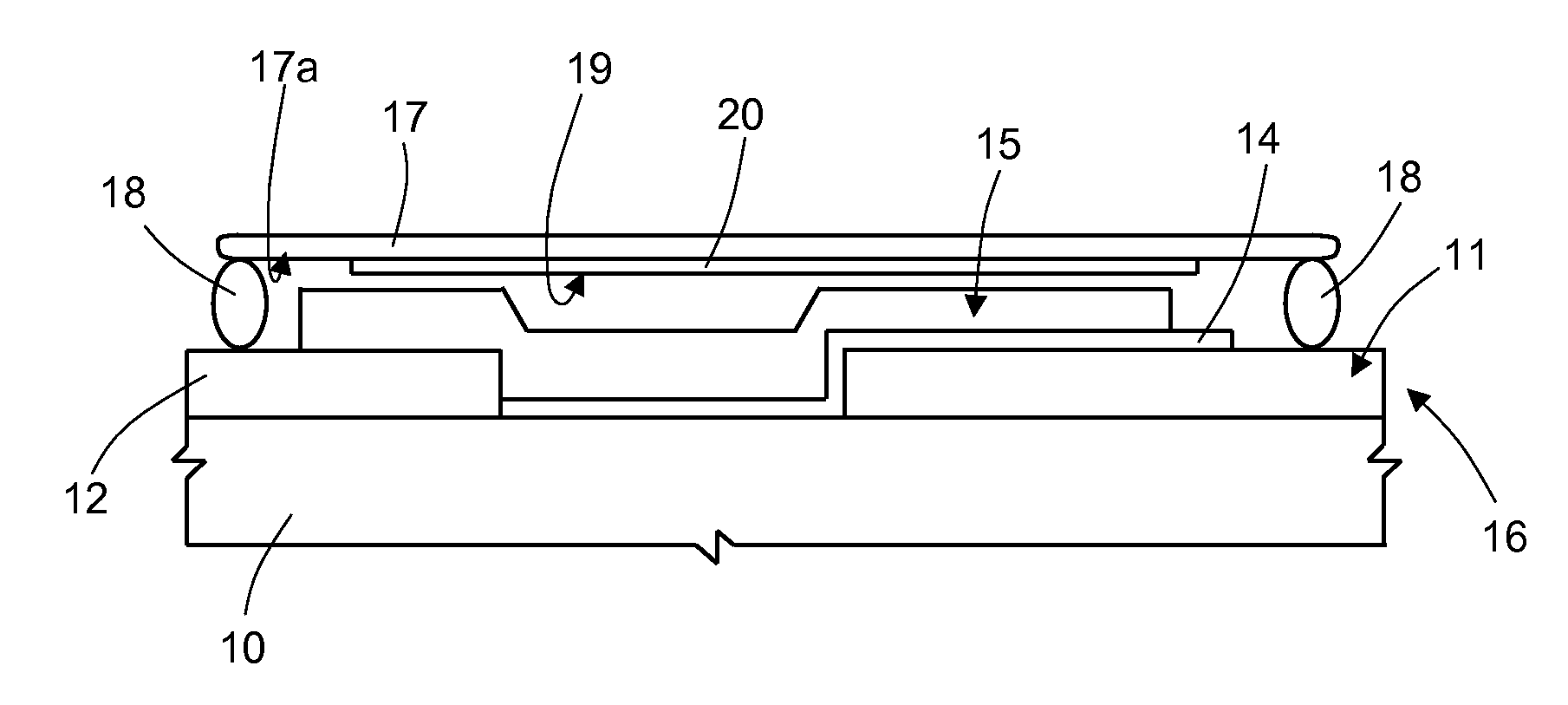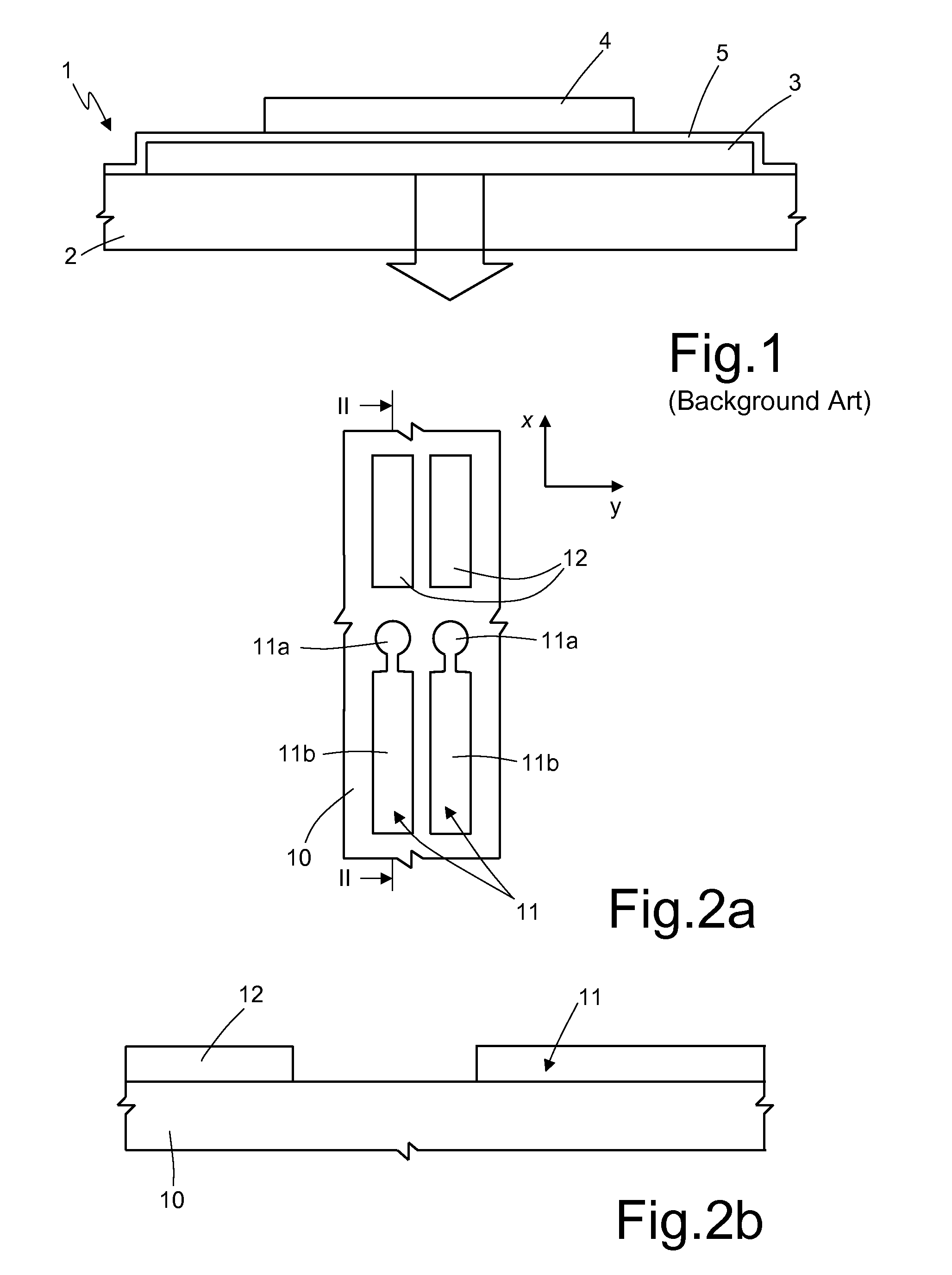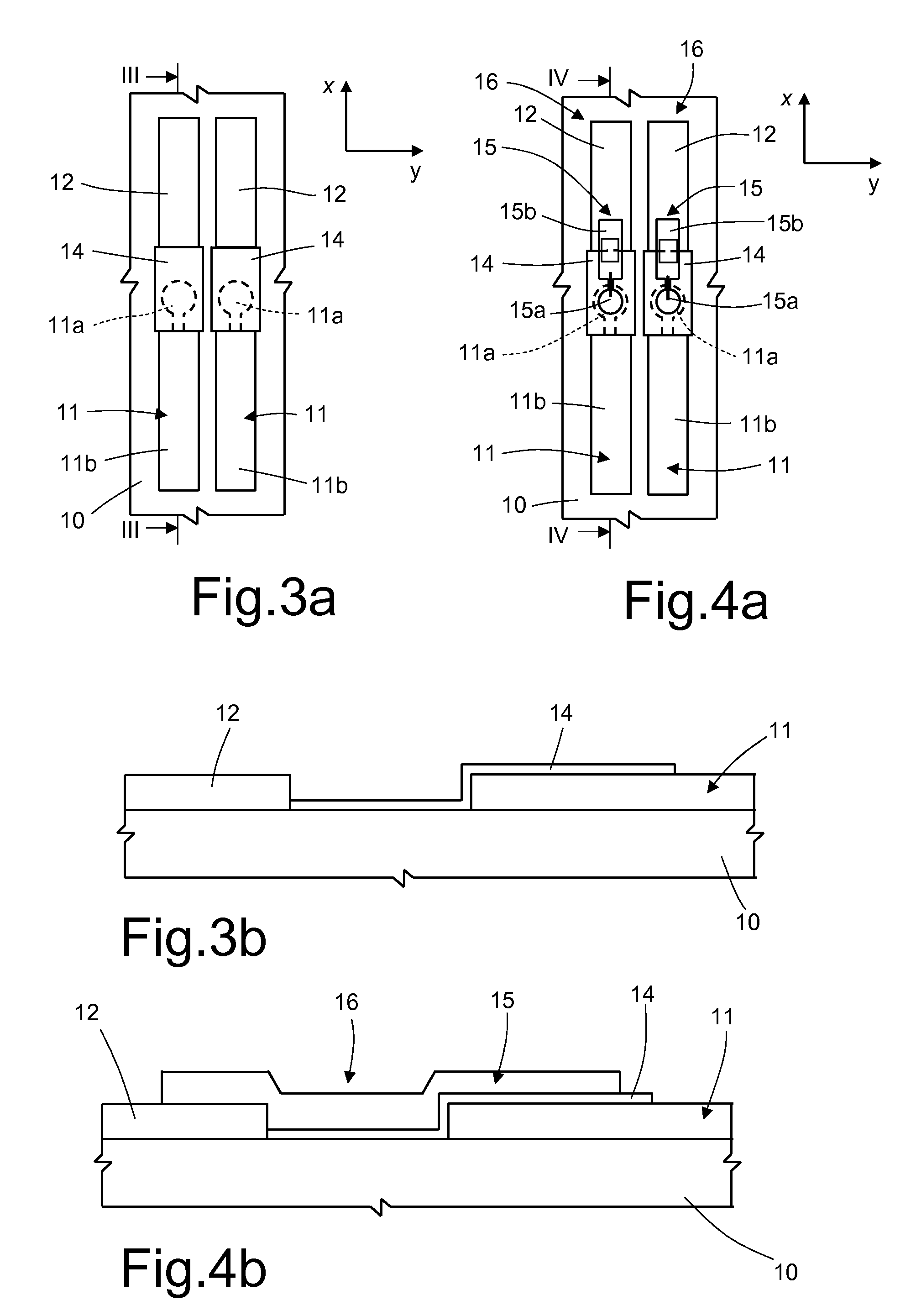Encapsulated Organic Electronic Device With Improved Resistance To Degradation
a technology of organic electronic devices and encapsulated organic materials, applied in thermoelectric devices, discharge tubes/lamp details, discharge tubes luminescnet screens, etc., can solve the problems of rapid degradation of organic materials used in these devices, and the degradation of devices, so as to achieve the effect of improving strength and stability
- Summary
- Abstract
- Description
- Claims
- Application Information
AI Technical Summary
Benefits of technology
Problems solved by technology
Method used
Image
Examples
first embodiment
[0019]A manufacturing process according to the present invention is now described, envisaging the formation of an organic electronic device comprising a plurality of elementary components (in particular, bottom-emitting OLEDs) made at least in part of organic materials. In what follows, for reasons of simplicity of illustration, just two elementary components will be illustrated, but it should be clear that any number thereof may be formed.
[0020]With reference to FIGS. 2a-2b (which are not drawn to scale, as neither are the subsequent figures), first electrodes (or anodes) 11 of the elementary components, and electrical contacts 12, are initially formed on a substrate 10 made of transparent material, for example, glass or plastic. As will be clarified, the electrical contacts 12 are designed to contact second electrodes of the elementary components so as to enable biasing thereof. A layer of transparent conductive material, for example ITO, is deposited on the substrate 10 and is th...
second embodiment
[0032]the present invention envisages the formation of an organic electronic device comprising elementary components 16 of a top-emitting OLED type.
[0033]In detail (FIG. 8), the electrical contacts 12, made for example of ITO, are initially deposited on the substrate 10, which here can be made of an opaque material. In this case, the electrical contacts 12 are designed to contact the first electrodes 11 to enable biasing thereof from outside the encapsulation.
[0034]Then (FIG. 9), the first electrodes 11, made for example of aluminium, are defined by means of a photolithographic process (or selective deposition / evaporation); the first electrodes 11 are set partially on respective electrical contacts 12 (contacting them), and extend partially on top of the substrate 10.
[0035]Next (FIG. 10), the organic regions 14 of the elementary components 16 are defined, for example, by means of selective deposition or evaporation. The organic regions 14 coat completely respective first electrodes ...
third embodiment
[0039]the present invention envisages formation of an array of elementary components 16 of an OLED type, for example, for use in a pixel-array display.
[0040]In detail (FIG. 13), during a single process of photolithography and etching of a layer of transparent conductive material, for example ITO, the first electrodes 11 and the electrical contacts 12 are initially formed on the substrate 10. The first electrodes 11 include active portions 11a, which are here to form row contacts of the array, and biasing portions 11b, each designed to bias a different row of the array. As will be clarified, each of the electrical contacts 12 enables biasing of a respective column of the array.
[0041]Then (FIG. 14), the organic regions 14 are formed (again via a selective patterning process) in the area corresponding to the intersections between the rows of the array, defined by the active portions 11a, and the columns of the array, defined ideally by the prolongations of the electrical contacts 12.
[0...
PUM
 Login to View More
Login to View More Abstract
Description
Claims
Application Information
 Login to View More
Login to View More - R&D
- Intellectual Property
- Life Sciences
- Materials
- Tech Scout
- Unparalleled Data Quality
- Higher Quality Content
- 60% Fewer Hallucinations
Browse by: Latest US Patents, China's latest patents, Technical Efficacy Thesaurus, Application Domain, Technology Topic, Popular Technical Reports.
© 2025 PatSnap. All rights reserved.Legal|Privacy policy|Modern Slavery Act Transparency Statement|Sitemap|About US| Contact US: help@patsnap.com



